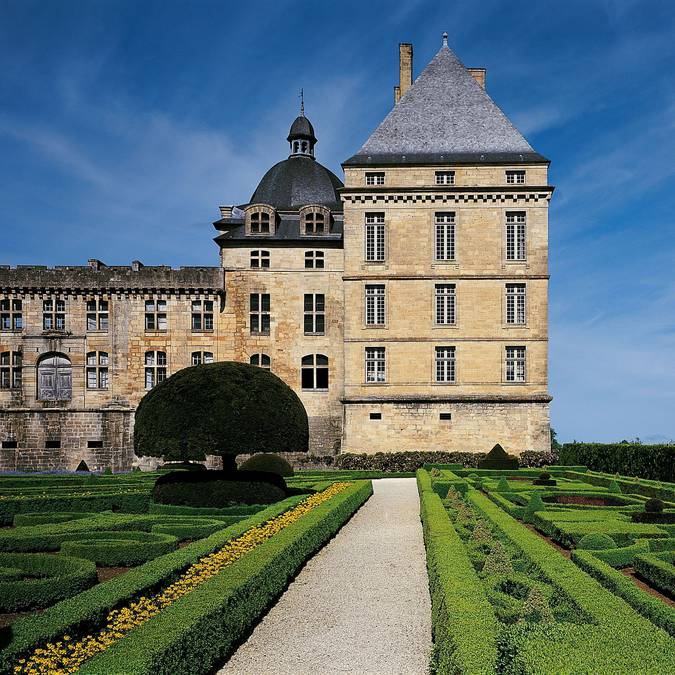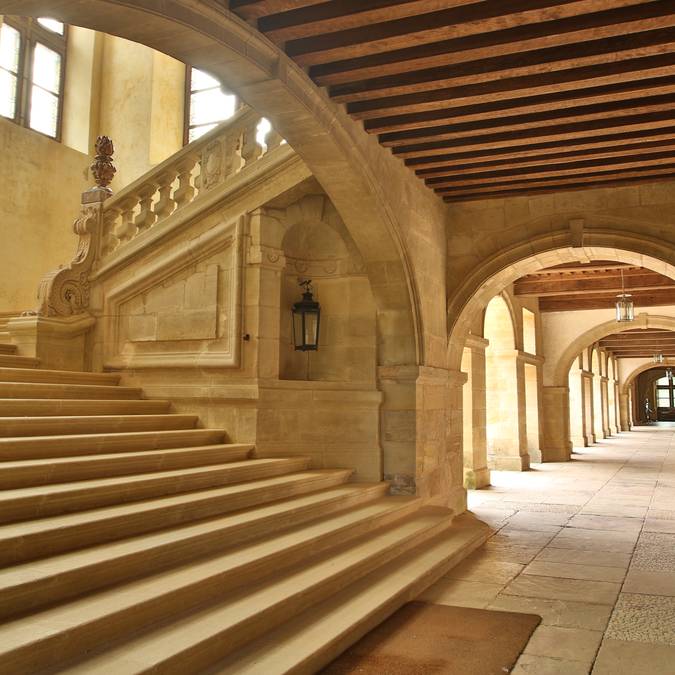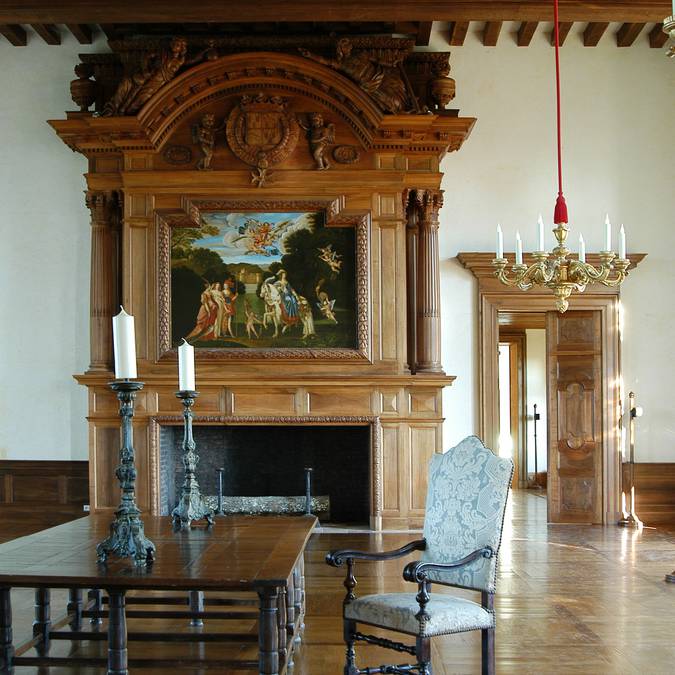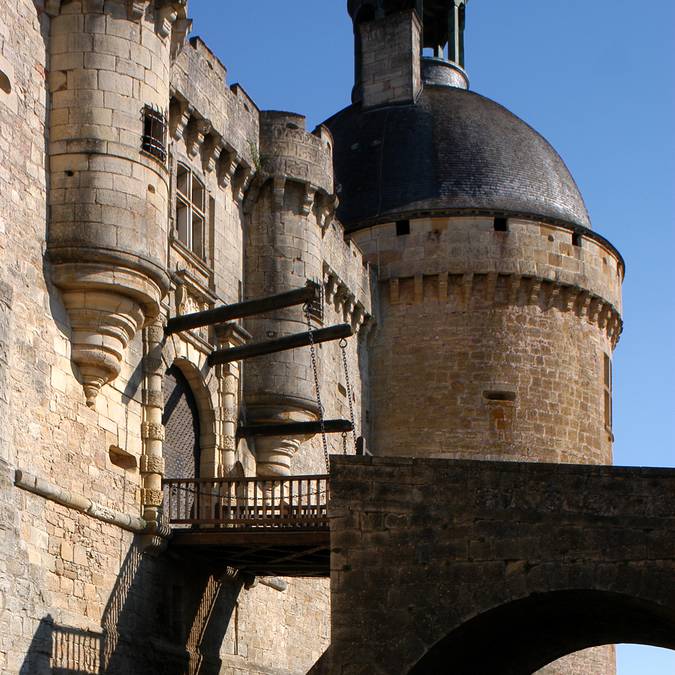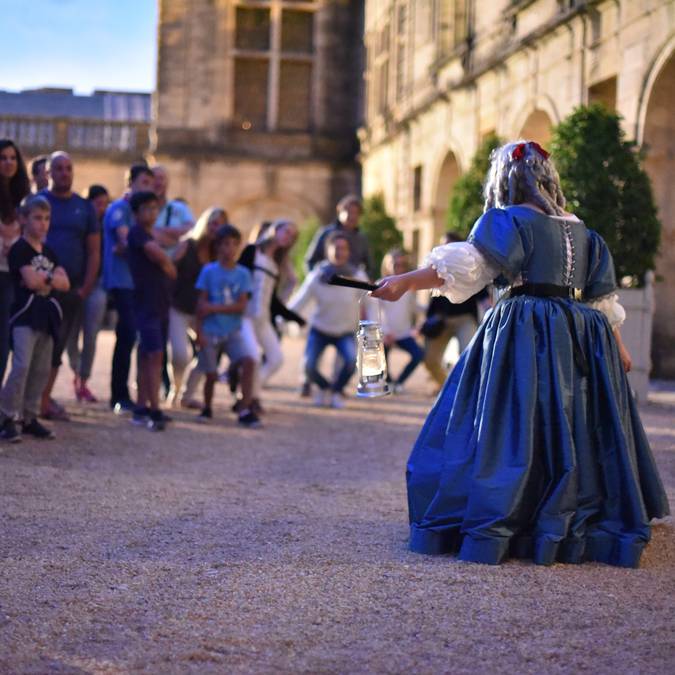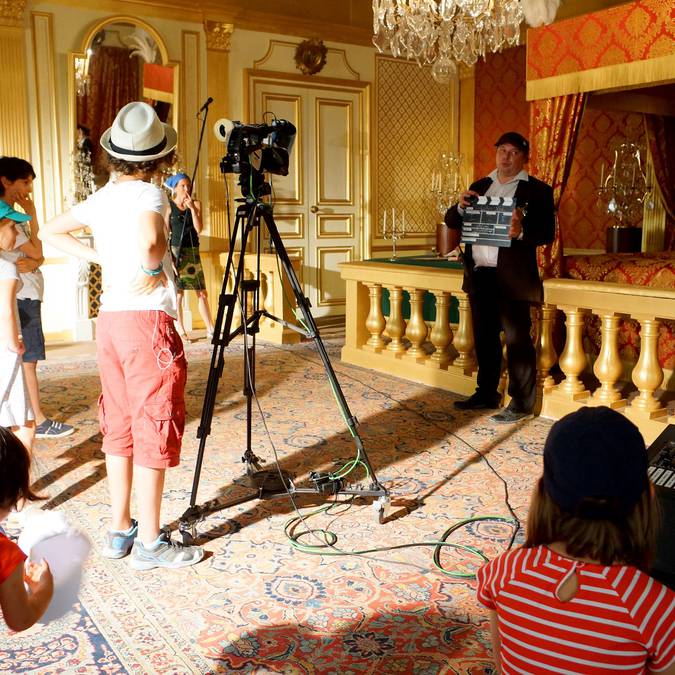Château de Hautefort, Jewel of the Périgord
By its classical style, Hautefort resembles more the Loire Valley chateaux than the fortified castles of the region. Its imposing and majestic silhouette reflects the rank and power of the seigneurs of Hautefort.
From the Middle Ages to the Golden Age of the Marquis of Hautefort.
- The first owner of the estate was Guy de Lastours around the year 1000. Gouffier de Lastours, one of his descendants, is apparently one of the thirty knights who entered Jerusalem in 1099 alongside Godefroy de Bouillon.
-
In the 12th century, through marriage, the medieval fortress composed of a keep and several towers and ramparts belonged to the family of the famous troubadour Bertran de Born.
-
From the 16th century, the fortress was gradually transformed into a pleasure residence. The castle then progressively abandons its defensive functions to become a "modern" castle.
From the 18th Century to the present day: a tale of passion
- In 1792, the castle was protected from destruction by the villagers. It was used as a "prison for suspects" from 1793 to 1795.
- The Hautefort family remained owners of the premises until the end of the 19th century. The castle was then sold in 1890 to a rich industrialist, Bertrand Artigues. After his death in 1908 without any descendants, the castle fell into disrepair...
- In 1929, love at first sight saved Hautefort, with the arrival of Baron Henry de Bastard and his wife Simone. They breathed new life into the house and its gardens. Only after the death of her husband in 1957, the Baroness completed the work and moved into the château in 1965. But she was powerless when a fire ravaged the main building during the night of 30-31 August 1968.
- The very next day, the Baroness de Bastard resolved to restore her castle once again. Moved by her passion and determination, everyone rallied to help and encourage her, from the local inhabitants of the village to personalities of the time, such as Pierre de Lagarde or André Malraux, all new passionate people, anonymous or known, who actively participated in the preservation of one of the most prestigious monuments in south-western France.
Château de Hautefort gardens
As early as the 17th century, there were formal gardens at Hautefort. But these were redeveloped over the following centuries to make way for those we admire today.
The formal "French style" gardens
In 1853, the Count de Choulot carried out an ambitious plan in Hautefort that fulfilled his desire to integrate the castle, gardens, park and surrounding landscape into a coherent and valuable whole.
The transformation of the garden was continued in the 20th century by the Baron and Baroness de Bastard, mainly between 1950 and 1980. On the esplanade, a gallery of Canadian thuja greenery, doubled by a boxwood parterre has replaced the old communal areas. The lawn and flowers have given way to boxwood and topiary art (the art of sculpting plants). The terrace to the north has also been planted with pruned boxwood, alternating with pillar yews. Arranged on terraces around the castle, the formal gardens form a green setting for an unforgettable walk.
The landscaped park
Choulot's park, with its winding alleys, offers varied views of the surrounding landscape and the castle. The adjoining buildings were concealed by coniferous plantations. These gardens, now transformed, are one of the great contributions of the Baroness de Bastard to rescue the Château de Hautefort, and they still contribute to the renown of the estate and the pleasure of a visit to it today.
Château de Hautefort - France's first eco-label castle
Château de Hautefort is committed to sustainable development. In 2016, it became the first château in France to be awarded the "NF Environnement : site de visite" label, which guarantees the reduction of the environmental impact of the estate's activities. Workshops and actions are offered throughout the season to promote its commitment to the planet
Practical information
The site is open from March 1st to November 11th.
The ticket office closes 30 minutes before the castle closes.
The gardens remain open until nightfall for visitors already on the estate.
The ground floor of the château (furnished apartments), chapel, main courtyard overlooking the boxwood beds, gardens and park, as well as the video projection room, exhibition areas and the shop are accessible to people with reduced mobility.

